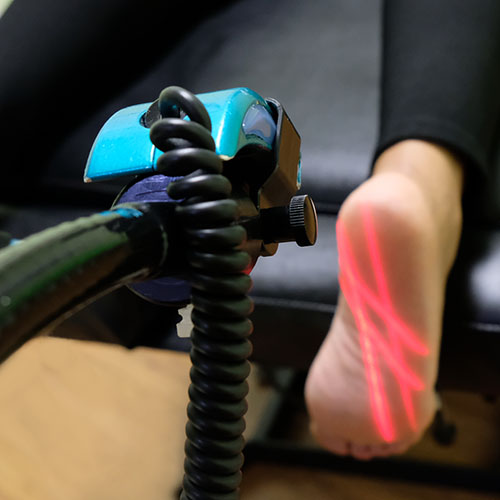What is plantar fasciitis?
Your plantar fascia is a thick band of tissue that connects your heel to your toes. Many of our daily activities like standing for long periods of time, walking in shoes without support, or just stepping off a curb wrong can put pressure on the plantar fascia and cause small tears in the fascia. The damage leads to inflammation and then scar tissue. More scar tissue means less flexibility, which leads to more tears and more scar tissue. It’s a vicious cycle that can spin out of control, leaving you with intense pain.
How we treat plantar fasciitis
To reverse the cycle, we need to break up the scar tissue so your plantar fascia can become more flexible and stop causing you pain. We do it in a way that entices the body to lay down tissue in a more linear fashion. Oftentimes we find that one of the causes of the problem was bones out of place in the feet (perhaps caused by an injury or ill-fitting shoes). If that’s the case, we adjust those first, which also makes the process of breaking up scar tissue less painful. We also often find that there are muscle spasms going on in your feet, so we use trigger point therapy to take care of those while we’re breaking up the scar tissue. Because muscles are attached to bones, they’ll keep pulling them out of place if we don’t resolve the spasm.
We’re not going to lie … the process of breaking up the scar tissue in your feet can be very painful, but we do promise that you’ll start feeling less pain on a day-to-day basis almost immediately. Usually it takes several visits to resolve the problem completely, and that depends on your age, how long the problem has been happening, and whether there are other complications.


How you can prevent plantar fasciitis
We appreciate if you work with us to prevent scar tissue from building up again in the future. One of the easiest things you can do is to wear shoes with proper support as often as you can, and stop walking around the house barefoot. Also, custom orthotics are essential not only for your recovery but also in keeping your feet, knees, hips and lower back in alignment. We have one of the most advanced bilateral 3D scanners for custom orthotics on the market today. Everyone’s feet are different, so we’ll work with you to figure out the best type of shoes and orthotics that give you support and work with your lifestyle.




